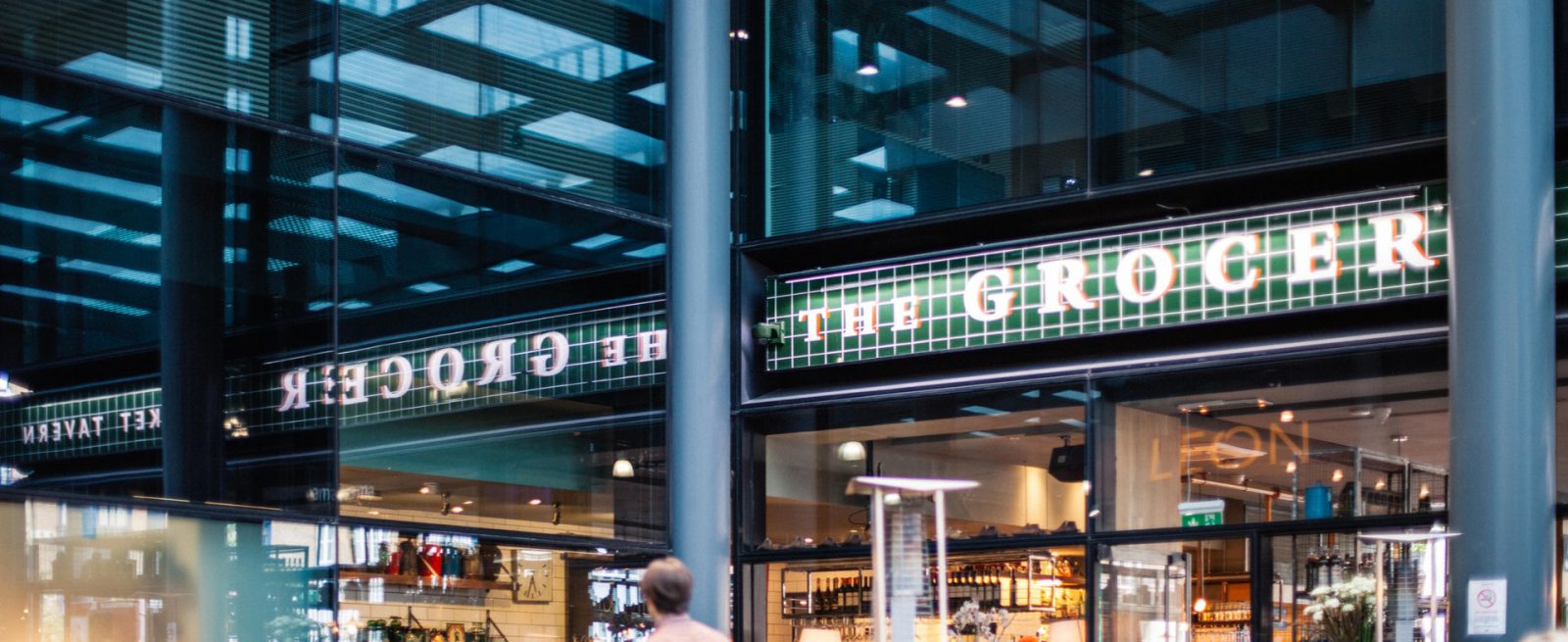Restaurants’ Secret Weapon in the Battle of the ‘Grocerant’
4 Min Read By Kevin Sanders
Declining restaurant sales have been making more than a few headlines of late. Reasons vary, but the growth in alternative options for meal service is often cited as a contributing factor. And, no, it’s not meal kit services like Blue Apron and HelloFresh that constitute the greatest threat. Believe it or not, grocery stores are responsible for the majority of these poached sales.
A new term “grocerants” has even been coined to define this trend of grocery chains implementing restaurant footprints either inside or adjacent to their stores. Generally, the term is restricted to the idea of a fully-embedded restaurant-style experience (i.e. an in-house Starbucks), but many grocery stores are also expanding and enhancing their prepared food sections as well.
The Threat
As restaurants prepare to counter the rise of the grocerant, convenience, cost, and quality are all major factors to consider. The one-stop-shop appeal of the grocerant is undeniable because what’s not to like about grabbing dinner while also picking up everything you need for breakfast tomorrow morning?
Restaurants can’t sit back and let competitors like grocery stores win the convenience battle.
When it comes to cost, restaurants have history to contend with. During the recent recession, many restaurants’ aimed to preserve profits by increasing prices.
Once food costs normalized, restaurants chose to keep their prices high. In fact, recent Black Box Intelligence™ research revealed prices have continued to increase on average between four and five percent over the last two years. In many cases, those price increases have allowed chains to bolster their bottom lines in the face of declining store traffic.
However, as markets have stabilized, grocery stores have been able to bring prices back down, making them a value alternative to restaurants. And grocery stores aren’t just putting out the same grab-and-go of yesteryear (no day-old saran wrapped sandwiches here), they’ve upped their game to include more options. That’s introduced another issue as recent research also shows that consumers, and particularly millennials, perceive the grab-and-go food offered by grocery stores as a healthier option than fast food.
Fighting Back
Restaurants can’t sit back and let competitors like grocery stores – and make no mistake they are competitors – win the convenience battle. So how can restaurant’s compete with and overcome the grocerant challenge? Put simply – technology.
In this tech battle for consumers there are three major fronts to consider: convenience, personalization, and engagement. Today’s consumers are more tech savvy than ever and expectations are very high. While the grocerant experience is typically low tech, if it’s better than your restaurant’s digital experience, you will lose.
Convenience
Anything (and everything) that saves consumers time – especially at the end-of-the-day rush – is valued. Other factors such as price and perceived healthiness are also part of the equation, but research shows that consumers are willing to compromise on the latter two for convenience. Recent research from Lux found that consumers are willing to pay 11 percent more for each convenience add whether that’s online grocery delivery or restaurant take-out.
Technologies like mobile order ahead that allow time-pressed consumers to quickly and easily order (and reorder) their favorite meal then swing by and scoop it up or have it meet them when they get home, trumps what the local grocery store can offer. The grocery store may cast a broader net with product offerings, but it has not yet made much of a play on the order ahead front or meal delivery. But that gap will likely close soon. So while restaurants currently have an advantage in this area, they need to capitalize on it now to win back convenience driven customers.
Personalization
Your customer values convenience, but they also value the ability to customize and personalize their meal and their ongoing experience with your brand. Again, this is where restaurants have the upperhand. Need that pizza to be half-pepperoni and half-Hawaiian? No problem. Want double meat on that sub? Sure. Need that burger on a gluten-free bun? We can do that, and we’ll remember it for the next time you order. The ability to customize a meal is particularly important to millennials who value the ability to make everything their own, and the added convenience of knowing what your customer likes makes it even more convenient. Restaurants have been at the forefront of this trend for decades and need to carry that through to digital ordering and delivery.
Many newer restaurant brands have built entire concepts around customizing orders, and even those who have not are still finding ways to meet customers’ needs in this area. In the battle against grocerants, personalization and the ability to easily process highly customized orders is critical. The tech exists to allow your mobile and online ordering to be just as customizeable as an in-store order. Again, while progressive grocerants are closing the gap, most still lack the ability for customers to customize their food offerings in any meaningful way.
Customer Engagement
Grocery stores pioneered the collection of customer data via “loyalty cards” back before they even possessed the computing capacity to process all the data they were collecting. Many of the larger grocery chains now have very sophisticated data gathering capabilities to analyze things like market basket data and replenishment cycles. But as powerful as this consumer knowledge is, grocery stores still lack the ability to act on these insights the way restaurants can, for example, through a branded mobile app.
Data is not engagement and having data does not by itself result in an increase in sales.
Simply put, data is not engagement and having data does not by itself result in an increase in sales. With an app on a consumer’s phone, the data generated by each interaction is insight into this customer’s preferences. This enables you to target relevant offers based on their interests and purchase behavior. The simple function of remembering that this customer ordered the chocolate cake last time allows you to upsell through the app. In fact, two-thirds of us are more likely to make a purchase from a merchant that sends us relevant and personalized promotions according to recent research from Accenture. Again, restaurants have the head start, but the grocerants are catching on and this gap will narrow over time.
The advent of grocerants has brought a new world of challenges for restaurants. And the changes will continue to come as disruptions like Amazon’s purchase of Whole Foods promise to change the game again. As restaurants search for ways to compete for convenience with grocerants in an ever-changing landscape, technology can be a decisive weapon in this battle. The advantages in convenience, personalization and customer engagement puts technologically savvy establishments in an excellent position to overcome the grocerant challenge.


